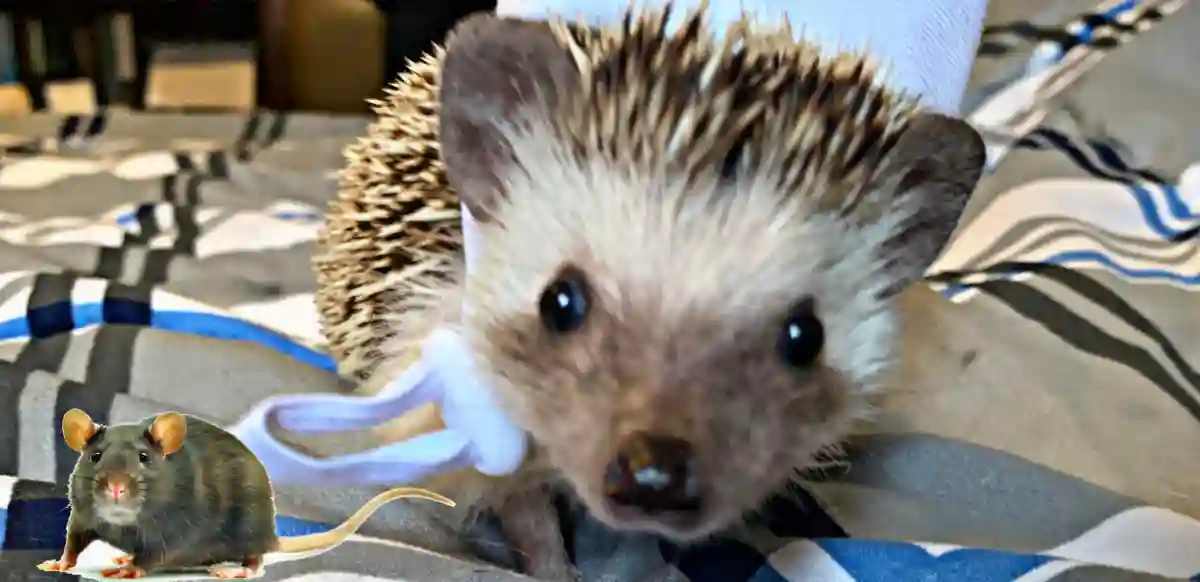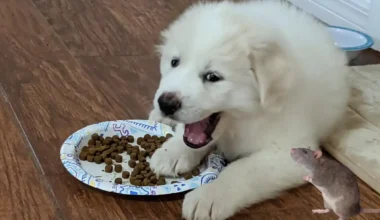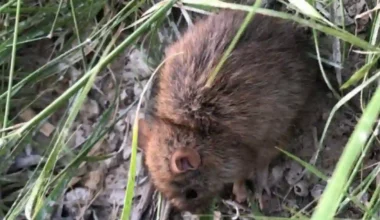It’s not ideal to have mice in your home as they can pose a threat to your health and cause harm to your property. The key to fixing this issue lies in finding the source of the infestation – the mice’s nest. Mice like to reside in secluded, protected areas and when near humans, they tend to make their homes in structures such as homes, barns, storage facilities, and fields where food is easily accessible. They may also build their nests outside in areas with dense foliage, tall grass, or shrubs. Fortunately, you can remove mice nest easily once you can detect the hideout.
What do mice make nests out of?
Mice nests are constructed from soft, warm materials such as rags, cloth, shredded paper, cardboard, food packaging, string, and fibrous substances such as grass or dried leaves. In their natural habitat, mice dig underground burrows to create their nests.
Typically, a mouse nest is dome-shaped with one exit hole, but mice nests vary depending upon the nesting space and the nest construction materials located nearby.
How to remove mice nest
It is simple to get rid of mice nests once you can detect them. Moreover, removing it will help expel the mouse, even permanently if you follow up with the right measures. Below are the steps to remove mice nest:
1. Identify the nest location
If you have a mouse infestation in your home, it’s likely that the mice have sought out areas that offer warmth and protection from extreme temperature fluctuations. They will also be located near their food sources, which could include your kitchen or nearby waste bins. If you spot a mouse near these areas, its nest could be located within a radius of 5 to 30 feet.
Some of the common hiding places for house mice include:
- Behind or beneath the refrigerator
- Unoccupied drawers
- Voids in walls or ceilings
- Closets housing the water heater
- Behind or under large appliances and furniture
- Inside cardboard boxes
- Voids in upholstered furniture
Mice also tend to build their nests in cluttered areas, such as attics, garages, and rooms filled with debris and secluded corners. The appearance of a mouse nest can vary based on the available space and materials, but they usually have a dome-like or ball-shaped structure with only one opening.
2. Gather your removal tools
Gather the necessary equipment Before you begin the removal process, it’s essential to gather the necessary equipment to ensure your safety and effectiveness. You will need:
- Rubber gloves
- A face mask
- A long-sleeved shirt and pants
- Sturdy shoes or boots
- A flashlight
- A trash bag
- A small shovel or trowel
- Disinfectant spray
3. Determine your approach
Before you begin the removal process, have a plan in place to remove mice nests. Consider the size and location of the nest, as well as any potential hazards.
If the nest is in a hard-to-reach area, such as within a wall or a tight crawlspace, you may need to access it through a different route or utilize specialized tools.
4. Kit up properly
Wear rubber gloves, a face mask, a long-sleeved shirt, pants, and sturdy shoes or boots to protect yourself from potential exposure to diseases, allergens, or parasites carried by mice.
The face mask will help prevent inhalation of airborne particles when you remove mice nest, while the gloves will keep your hands clean and protected.
5. Remove the mouse nest
Before you remove the mice nest, inspect for and remove any dead or live mice that may still be present. Use various methods, such as setting up snap traps or live traps around the nesting area.
If you choose to use traps, check them regularly and dispose of any caught mice according to local guidelines. Keep in mind that using poison to control mice is not recommended, as it can pose a risk to other animals and humans.
To remove the nest, use a small shovel or trowel, and gently scoop the nest into a heavy-duty trash bag. Be cautious not to disturb the nest too much during the process, as this can release harmful particles into the air. If the nest is in a hard-to-reach location, you may need to use a vacuum cleaner with a hose attachment to remove it.
6. Disinfect the area
After removing the nest, thoroughly clean the surrounding area. Use a disinfectant spray to kill any lingering bacteria or viruses. Be sure to clean any surfaces that may have come into contact with the nest, such as floors, walls, and countertops.
If there is extensive damage, you may need to replace insulation or repair holes in walls or floors after you remove mice nest.
7. Dispose of the nesting materials
Seal the trash bag containing the nest and any contaminated materials, and dispose of it according to your local waste disposal regulations. Ensure that the bag is securely closed to prevent the spread of disease or the escape of any remaining mice.
Stop mice from returning to build a nest
Removing the nest will make the mice suspicious of changes in their environment. However, that alone will not expel them from your home. Do the following to prevent a new mice nest from being built after a few days of cleaning:
1. Eliminate entry areas
Exclusion strategies are an effective way to prevent mice from entering your home to rebuild a nest. Mice and other pests can squeeze through small openings. If a pencil can fit through a crack, hole, or opening in your home, mice can probably get through as well. According to the CDC, a hole the width of a pencil (1/4 inch or 6 millimeters in diameter) is enough for mice to fit in.
Sealing cracks in your home’s foundation and walls, especially around vents and utility pipes, can help eliminate entry points.
Ensure that all doors are properly sealed when closed. Keep in mind that mice can gnaw through many sealants, such as plastic, wool, and rubber, so it’s best to fill gaps with steel wool or caulking.
2. Set up mouse traps
There are several methods for controlling rodents, including traps, bait stations, rodenticides, and professional pest control.
For DIY rodent control, trapping is a safer option as it does not pose the same risks to children and pets as rodenticides.
Strategically place traps and bait, rather than randomly setting them. Observe the areas where mice are living, passing through, and building nests. Once you have identified these high-traffic locations, place traps in the areas where the mice are most active. Snap traps, enclosed snap traps, glue traps, and humane traps are the four most common trap types available for purchase at hardware stores.
Avoid using cheap glue traps as they are considered to be cruel. Large mice can carry the trap and eventually shake it off, while smaller mice may die from starvation. Using small snap traps for large mice can also be inhumane, as it may cause injury or amputation to the mouse without killing it. The number of traps you set up will depend on your specific situation.
The greater the number of traps you set, the more mice you will be able to eliminate. Position the bait facing the wall to entice mice to investigate, rather than bypass the traps. Mice primarily consume nuts and grains, so they may prefer bait such as peanut butter, hazelnut spread, or even chocolate over cheese.
3. Clean up indoors and outdoors
Mice are not particular about their food and can subsist on just a few grams of crumbs each day. They also require only minimal amounts of water and can thrive in environments filled with human waste.
Focus on removing the resources they rely on. This involves maintaining a clean environment both inside and outside your home. To drive mice away, consider doing the following:
- Regularly vacuuming the floors
- Cleaning countertops
- Using tightly sealed lids on garbage cans
- Immediately disposing of food waste
- Removing excess pet food or birdseed
- Keeping food in airtight containers or glass jars
- Storing firewood at a distance of at least 20 feet from your home
- Eliminating burrows or nests and disinfecting the area
- Removing potential nesting materials such as old furniture, unused planters, or piles of paper
- Maintaining your outdoor spaces by mowing the lawn, trimming bushes and shrubs, and cutting back branches.
4. Introduce pets to your home
Many pets, including cats and dogs, have an instinct to hunt mice. This is why barn cats are often kept on farms to control the mouse population and protect crops. The scent of a mouse’s natural predators, such as cats and ferrets, may deter mice from entering your home.
However, this method is not always effective. Some pets may not be interested in hunting mice, and it’s not recommended to acquire a pet solely for pest control.
Signs of mouse nests
House mice are active at night and avoid bright daylight, making them challenging to locate and track their nests. However, you can look for signs of their presence to determine where they might be nesting. These signs include:
1. Ammonia-like smell
The presence of mice in your home can easily be detected by their strong, musty odor. Their urine and droppings emit a stale, putrid scent. The urine also gives off a potent ammonia smell and leaves behind calcium deposits as it dries.
2. Noises
Despite their preference for quiet, concealed places, mice may make scampering, skittering, or scratching sounds when they are active during the night. They also emit loud squeaks as they communicate with each other.
3. Fresh or old mouse droppings
Mice produce small, black, or brown droppings that are shaped like rods and measure between 1/8 to 1/4 inch in length. These droppings resemble grains of rice and may contain tiny hairs as well.
4. Gnaw marks
Mice have constantly growing teeth and thus tend to chew and gnaw on various objects. They can even cause damage by gnawing on furniture and electrical wiring insulation. Mice may also chew through materials like paper and cardboard boxes to gather nesting materials. It’s important to inspect your food packaging and pet food containers for any signs of holes or teeth marks.
5. Nesting materials
When mice construct their nests in your home, they may leave behind materials such as cardboard, cotton, or shredded paper. They may also scatter food scraps and wrappers in random, hard-to-reach locations.
6. Grease trails
Rodents have limited vision and follow established routines, sticking to the same paths as they navigate in the dark.
Mice also tend to stick close to walls, leaving behind dark grease marks. You may also observe droppings, urine trails, or dust that has been cleared by their tails along these pathways.
You may need a pest professional to remove mice nest
Choosing a do-it-yourself approach for mouse removal may seem like a more cost-effective option compared to hiring a professional exterminator or pest control specialist.
However, attempting to get rid of mice on your own can be a challenging task. If there is only a small number of mice, it may be possible to achieve the desired results. However, if the infestation is already significant, it can quickly become overwhelming. Mice have a rapid reproduction rate, and by the time you have learned how to trap them or set up bait stations, your efforts may not be enough to handle the infestation. They can provide you with valuable advice and tips on how to prevent future infestations, making it well worth the investment.






